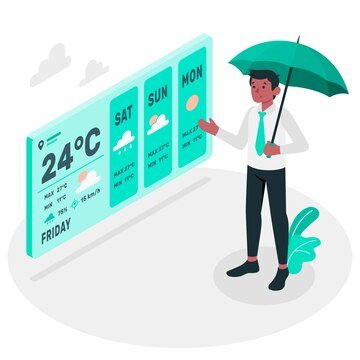Introduction
A tornado watch has been issued for several counties in northeast Ohio, signaling heightened awareness for residents as severe weather approaches. This article aims to provide comprehensive information on what a tornado watch means, the specific counties affected, safety precautions to take, and how to stay updated with the latest weather developments. Understanding these factors can help ensure you and your loved ones remain safe during severe weather events.
What is a Tornado Watch?
The National Weather Service (NWS) issues a tornado watch when conditions are favorable for the development of tornadoes in a particular area. This means that atmospheric conditions are conducive to the formation of tornadoes, but none have been confirmed or observed yet. It is an alert for residents to stay vigilant and prepare for the possibility of a tornado.
In contrast, a tornado warning is issued when a tornado has been sighted or indicated by radar, and it signifies an imminent threat to life and property. During a tornado warning, immediate action is required to protect oneself from the dangers of a tornado.
Discovering West Seattle Blog: Your Ultimate Guide to Community News
Counties Affected by the Tornado Watch
As of the latest update, the tornado watch covers several counties in northeast Ohio, including:
- Cuyahoga County
- Lorain County
- Medina County
- Summit County
- Portage County
- Geauga County
These areas are experiencing conditions that may lead to the formation of tornadoes. Residents in these counties should be prepared for rapidly changing weather conditions and stay informed through reliable sources.
Discovering Countries That Start with D: A World Tour
Understanding the Weather Conditions
Several factors contribute to the issuance of a tornado watch. Key elements include:
- Warm, Moist Air: Tornadoes often form in environments where warm, moist air at the surface meets more relaxed, drier air, creating instability in the atmosphere.
- Wind Shear: Tornadoes require significant wind shear, which is a change in wind speed and direction with height. Strong wind shear can contribute to the rotation needed for tornado formation.
- Thunderstorms: Severe thunderstorms, particularly supercells, are often the breeding grounds for tornadoes. These storms have a rotating updraft called a mesocyclone, which can develop into a tornado.
Safety Precautions During a Tornado Watch
While a tornado watch does not mean a tornado will occur, it is essential to take certain precautions to ensure safety. Here are some recommended actions:
- Stay Informed: Monitor local weather updates through radio, TV, or weather apps. Pay attention to any alerts or warnings issued by the National Weather Service.
- Create a Safety Plan: Establish a plan for your household that includes a designated safe area such as a basement, storm shelter, or interior room on the lowest floor of your home. Ensure everyone knows where to go in case of a tornado.
- Prepare an Emergency Kit: Assemble an emergency kit with essentials such as non-perishable food, water, medications, a flashlight, batteries, and a first aid kit. Keep the kit in an easily accessible location.
- Secure Your Home: Check that windows and doors are secure. If you have time, move outdoor furniture and other items that could become projectiles.
- Stay Indoors: If the weather conditions worsen, remain indoors and avoid using elevators. Stay away from windows and seek shelter in the designated safe area.
- Follow Local Guidance: Follow any instructions or evacuation orders from local authorities. They will provide specific information based on the evolving situation.
How to Stay Updated
During severe weather events, staying updated is crucial. Here are some ways to ensure you receive timely information:
- Weather Radio: Invest in a NOAA Weather Radio with an Alert function, which broadcasts continuous weather information and emergency alerts.
- Weather Apps: Download weather apps that provide real-time updates and notifications. Many apps offer radar images and severe weather alerts.
- Local News: Tune in to local news channels or visit their websites for updates. They often provide detailed coverage and live updates on severe weather events.
- Social Media: For updates and alerts, follow the official social media accounts of the National Weather Service and local emergency management agencies.
- Community Alerts: Sign up for community alert systems that send notifications via text, email, or phone call during emergencies.
Final Thoughts
A tornado watch issued for several northeast Ohio counties signifies a need for heightened awareness and preparation. While a tornado watch does not guarantee a tornado will occur, it serves as a critical reminder to stay vigilant and ready for severe weather. By understanding the conditions that lead to tornadoes, implementing safety precautions, and staying informed, you can better protect yourself and your family during such events.
Severe weather can be unpredictable, and being prepared can significantly improve your safety. Remember to review and update your emergency plan regularly and keep your emergency kit stocked and accessible. By taking these steps, you can navigate tornado watches and warnings with greater confidence and security.
Questions and Answers
- What should I do if a tornado watch is issued for my area?
- If a tornado watch is issued, stay informed about the weather conditions, prepare your emergency kit, and review your safety plan. Make sure everyone in your household knows where to go if a tornado warning is issued.
- How can I differentiate between a tornado watch and a tornado warning?
- A tornado watch indicates favorable conditions for tornadoes, but none have been confirmed yet. A tornado warning means that a tornado has been sighted or indicated by radar, and immediate action is needed to protect yourself.
- What are the best ways to stay updated during severe weather?
- To receive timely updates and notifications during severe weather events, use NOAA Weather Radio, weather apps, local news channels, social media, and community alert systems.
- Can I continue with outdoor activities during a tornado watch?
- It is best to avoid outdoor activities while watching a tornado. Stay indoors and monitor weather updates to ensure you are prepared if conditions worsen.
- How can I protect my home from tornado damage?
- Secure windows and doors, move outdoor items that could become projectiles, and have a designated safe area within your home. If possible, seek shelter in a basement or interior room on the lowest floor.
Sources
- National Weather Service – Tornado Watch Information
- The Weather Channel – Severe Weather Preparedness
This comprehensive guide aims to equip you with the knowledge and tools necessary to stay safe when a tornado watch is issued. Stay alert, be prepared, and keep informed to navigate severe weather conditions effectively.










